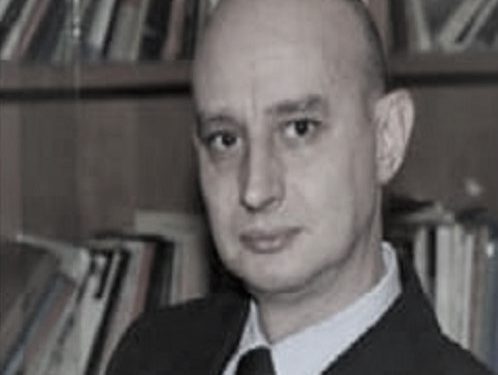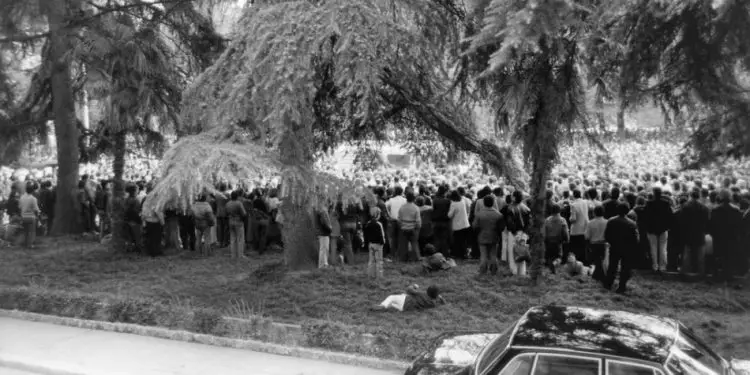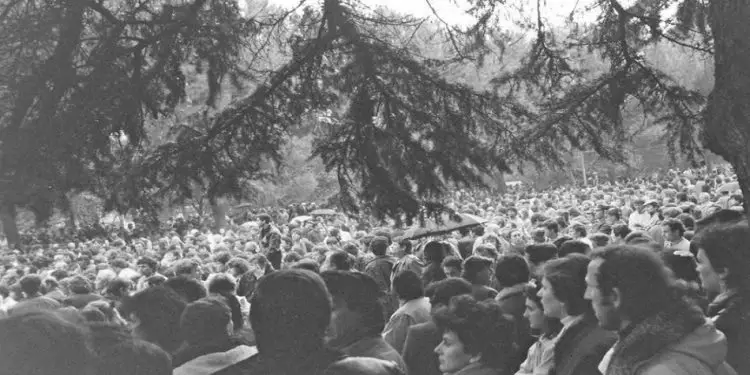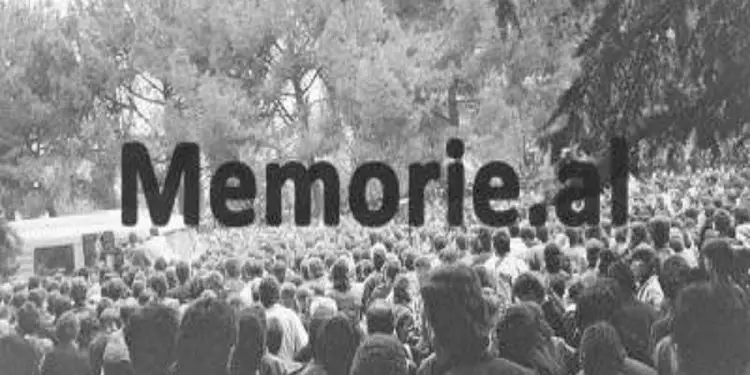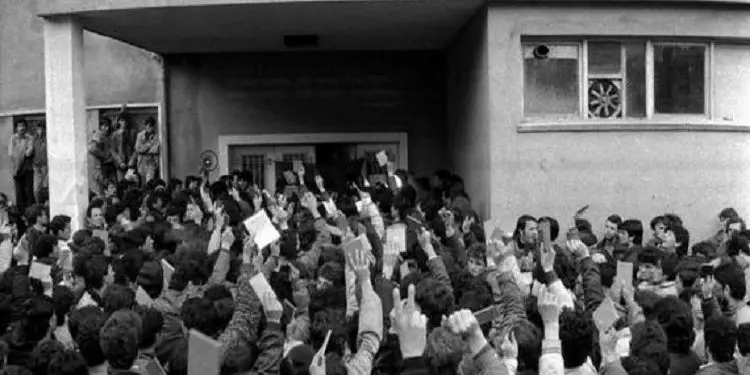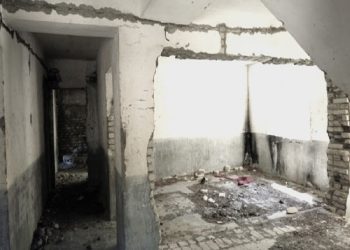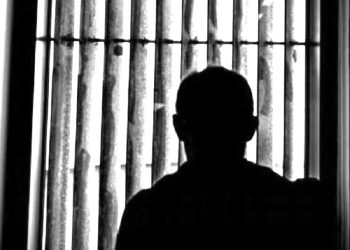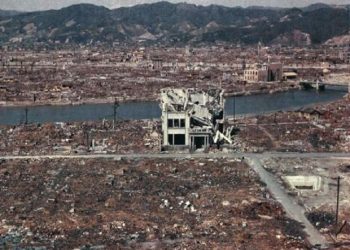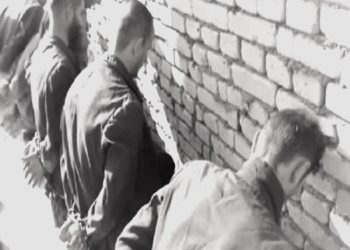By Edvin Schwartz
Memorie.al/ February 20, 1991, has entered Albanian history as the day when the false myth of dictator Enver Hoxha was finally destroyed, as the day when most worthy Albanians breathed freely being freed from a half-century nightmare and when a the minority experienced the “mottling” and “humiliation” of their “spiritual father”, around whom they had built the existence and enjoyment of their undeserved privileges. February 20 was the hour of truth, the dividing point of the two eras, the moment when the vast majority of the entire Albanian people celebrated the fall of the dictator’s monuments from the pedestals where they had erected it unjustly and when, at the same time, the ruling class gritted its teeth in anger deafened by the bells ringing loudly heralding the end of their bloody rule. From that day on, there would be no more proletarian dictatorship in Albania, no more class warfare and fratricide in the name of communist ideals, and two proud Albanians would wave freely without a five-pointed star on their head. The most important thing was that the Albanians would go to the first democratic elections after 46 years completely liberated from the heavy shadow of E. Hoxha and would decide for themselves their future, without going through the trauma of a possible civil war for the merits or crimes of the Hoxhaist regime.
These important achievements came as a direct consequence of the Hunger Strike organized by the students of the State University of Tirana from 18 to 20 February 1991. How and why did the February 1991 Hunger Strike take place? What were its goals and by whom was it organized? Who would benefit and who would lose from this Strike? Were the students really the “self-sacrificing heroes” of the fragile Albanian democracy, as they were called by the people of Tirana, or were they the “bakers and vandals” who together with the “dark forces” were “ready” profaned even the graves of the first ”, which endangered the stability of political forces and risked leading the country into chaos? These are some important points, on which this article will try to shed some light, without claiming to monopolize the truth, as only the main participants in those events, along with historians, have that exclusive right.
Immediately after the advent of Albanian political pluralism and timid democracy, thanks to the start of the Student Movement in December 1990, the first opposition parties were formed, which included many enthusiastic students. With the establishment of party branches in the districts, as well as the election of presidencies, there was a deliberate removal of some students, who had played a significant role during the December protests. This avoidance was justified by the youthful immaturity of some, by the lack of political experience of some others, as well as by the pretext that the students with the behavior of pluralism had completed their historical role. So the students returned to their main task – they went back to school and took the January exams, finding with surprise that the University was still too politicized, that the dispensations contained whole chapters in the Marxist-Leninist spirit, so as much as the book “Introduction to Linguistics” began with a quote from Stalin! The work got to the point that those professors and deans who had threatened to expel students from school during the December protests were now taking exams again or giving lectures on the crucial role of the Labor Party in the history of Albania and on the “polyhedral” figure of Comrade Enver, whose portraits and busts continued to stand majestically in the icy audience!
Desperate and touched on sensibility, to some extent even used by others, the students thought that everything had to be done to depoliticize the University and that they still had the ability to contribute to the good of Albania. At the initiative of a group of students, among whom were: Arben Lika and Shinasi Rama, the Student Association “Fan S. Noli” was created. This Association with a clearly defined program aimed at organizing all high school students in a single body, depoliticizing the University, increasing the level of education, administration of student facilities, cooperation with Kosovar students and the exchange of experience and knowledge with foreign universities to enable the creation of a new layer of intellectual cadres, who in the near future would contribute not only to the advancement and prosperity of the homeland, but also to the consolidation of democracy.
The “Fan S. Noli” Association held several meetings and gatherings at the Faculty of Philology, the Higher Institute of Arts, Electrical-Mechanical Engineering, and entered into contacts with the Higher Agricultural Institute of Kamza and the high schools in Shkodra, Elbasan and Gjirokastra. Its aims were noble and far-sighted, but the ideological, educational or even political independence of the students did not interest all those who aimed to keep the students under control and later use them as political tools or simply as a potential voting potential. Precisely to prevent this independence as well as the extension and strengthening of the Association “Fan S. Noli”, with a surprising speed and ease for the time, was created and introduced the documents for legalization in the Ministry of Justice, Albanian Student Association, the program of which surprisingly contained quite a few points “borrowed” from the “Fan S. Noli” program and its executives were self-proclaimed.
At this time the Kamza Institute had started protests of a mainly economic nature. In support of them, students of the University of Tirana gathered in the Student City boycotting the lectures; sent another delegation to Kamza. Rallies and gatherings in the square in front of the canteens just came and became more frequent, giving the impression of the renewal of the Student Movement. Leading representatives and leaders of the Student Association gave daily speeches expressing their thoughts and feelings. Among them were Blendi Gonxhe, Ridvan Peshkëpia, Arben Sulo, Blendi Fevziu, Ben Blushi, Arjan Manahasa, Ilir Dizdari, Nesti Kiri and many others who tried their oratory. One day, Bislim Ahmetaj, one of the student leaders there, came from Kamza and spoke. The essences of their speeches were the mockery of the dictator Hoxha, with his life and deeds, to the point that the poems and memories of a former comrade-in-arms of the communist leader were ironized. All these speeches were sometimes accompanied by the songs of John Lennon and the Beatles, which sought to give “a chance for peace” and imagined a world free and free from any kind of tyranny, an ideal world where people would live. happy and in complete harmony. Gradually, however, these rallies were losing their spirit of protest and student participation was declining. Only the most determined, some of whom jokingly called each other “Movement veterans”, having been in the square since December 8-9, came daily, waiting for the protest to crystallize and the efforts of their sacrifices to achieve some result. At one of the January rallies, five students, including I. Panajoti, E. Lohja, and brothers R. and E. Kubati, were arrested and held for several hours in Police District 2 alone, for shouting “Enver- Hitler! ”. On January 22, 1991, President Ramiz Alia issued the infamous decree number 7459 “On the respect and protection of monuments”, a decree which aimed only at preserving the figure of communist leader Enver Hoxha, as no one intended to tear down the busts of De Radës, Vëllezërve Frashëri or to get Skënderbeu off the horse. Precisely for these reasons, protest leaders and makeshift orators received daily leave from the police and were required to submit the list of speakers in advance. To the surprise of many students, the name of Shinasi Rama, one of the most ardent and trusted leaders of December and one of the founders of the Association “Fan S. Noli”, never appeared in the lists of speakers at the rallies of the Association Studentore.
In the first week of February, rallies had begun to degenerate into endless litany for the shortcomings of E. Hoxha, the Politburo and the communist regime, and not infrequently turned into gala or closed with group dances to the sounds of rock music. . Although the ideas for the removal of the name “Enver Hoxha” from the State University of Tirana and the repeal of the decree for the preservation of monuments or the depoliticization of the school were thrown in the meantime, it seemed as if no one was paying attention to the protests. There was no positive response from the government, on the contrary Ramiz Alia had stated from the beginning that it was not up to the students to decide on the name of their University, because it belonged to all the people and that later the issue could be resolved by referendum. On the horizon was the possibility of a hunger strike, mentioned by Gonxheja, as the only peaceful alternative, if the student demands were not accepted. But how could Hoxha’s name be removed and the school depoliticized, how could he go towards the Hunger Strike, mocking day and night with the figure of the dictator and dancing to the sounds of the Beatles music! Ordinary students as well as most “veterans” lost their patience and one day in the second week of February they insisted that Shinasi Rama be allowed to speak. He took the floor and with convincing arguments and in a fiery tone presented some of his ideas where he stressed that the road to democracy would be long and arduous, that democracy required a lot of work and sweat and sacrifice and that the demands and ideals of students they had to be filled even if the tanks passed over the bodies of the students and that square was washed with blood. His speech had an electrifying effect and followed by the speeches of some others, he dressed the protests with due seriousness and determination.
Representatives of all organizations and political parties came and expressed their attitude towards student demands. Ismail Lleshi of the Labor Party was whistled all the time and was not allowed to finish his speech. The same fate befell Skënder Gjinushi, Minister of Education. Rrapo Zgurri, the representative of the Albanian Working Youth, although he personally joined the student demands, could not officially support them. Azem Hajdari also had a strange attitude, who together with G. Pashko, spoke on behalf of the Democratic Party and thanked the students who had given him the opportunity to drive! He agreed with the demands, but being the leader of an opposition party, which had signed the Stability Pact to avoid popular strikes and riots until the next elections, he could not publicly join those more than just demands. Even more curious was the exchange of accusations between him and Shinasi Rama. Under the falling snow and in the presence of some 20-30 students, Azem Hajdari said that the one who mentioned the blood was a provocateur, while Shinasi Rama replied that the one who called him a provocateur was himself a spy. The students present did not welcome the accusation of Azem Hajdari, as well as the public quarrel of the two comrades of December, who not only went through many dangers together, but who were also considered as the most important and influential leaders of the Student Movement together with Tefalin Malshyti and Arben Lika. But the positions of these two brave students had undergone a radical change: Azem Hajdari spoke from the position of Chairman of the Democratic Party and as a politician, while Shinasi Rama, who had more than a month to resign from the DP, had remained a simple student and loyal to the ideals and interests of his peers and apparently since the hectic days of December a lot of water had flowed…
In the days that followed, the determination and crystallization of the demands came increasing. At one of the illegal rallies in February, Arben Lika, who had just been operated on by the appendicitis, gave a very radical speech where he went so far as to promise that “even the bones of the dictator would be exhumed and shot” . Listened calmly, that speech would sound like a revenge and inhuman call, but in the context of those days it did nothing but highlight hatred for the fratricidal past and the determination to meet the demands of the students.
Having no other peaceful way, the students with a Steering Committee composed of: Arben Lika, Arian Manahasa, Blendi Gonxhe, Mesila Dode, Ndue Lugja, Ilir Dizdari and Ridvan Peshkëpia, decided to go on hunger strike until their demands are met. . The hunger strike that started on February 18 took place to remove the name of Enver Hoxha from the State University of Tirana. This strike was made to demystify the figure of a dictator, who not only had led the country into the abyss, but still continued to rule through his ideological heirs. The strike was held to depoliticize higher education, as well as to overturn the infamous monument protection decree. The students also demanded the release of the last political prisoners, who were still being held in the horrific prisons of Burrel, Spaç and Qafë-Bar. The main goal of the brightest part of the striking students was to avoid civil war, an inevitable conflict for the time being, if the status quo imposed by state leaders and opposition parties was still maintained. Simple logic leads to the conclusion that the Albanian people could not go to the first democratic elections free from the anxiety of the past, if the debate on the figure of Enver Hoxha was not given a solution an hour ago. This debate would continue until it erupted, perhaps even into a fratricidal armed conflict, as demonstrated by the creation of the Enver Volunteers Association and the rattling of weapons, Hysni Miloshi’s rhetoric, the events on the boulevard on February 21, 1991, or the School clashes. United a few days after the fall of the dictator’s monument.
Alia’s proposal to hold a referendum did not promise anything good. The referendum could be a single question: ” Was Enver Hoxha a great leader of the nation? ” Or ” Does the State University deserve Enver Hoxha’s name? ” An answer ” Yes! ” Or ” No! ” He would not solve anything and all the communist monstrosity would be passed with one: ” Yes, mistakes have been made! ” These were actually the reasons why the Hunger Strike took place. Who cared and who did not like this Strike? What were the internal forces that pushed forward the accomplishment of this historic mission and who were those who worked day and night against the development and success of the student enterprise? For the above reasons, the students were generally of the opinion that with this Strike they were doing a great service not only to the entire Albanian people, but also were continuing to fulfill their historic mission. The demystification of the figure of Enver Hoxha benefited all those real Albanians, whose lives, dreams, work and toil, sweat and blood were destroyed by the communist regime and the class war. On the contrary, a minority of people who had stained their hands with blood and based their existence and rise to power around the dictatorship of the proletariat, demanded that in order to preserve their privileges and social positions, history be not revised. In the ranks of students there were sons and daughters of party secretaries and communists, there were also those who had grown up in the yard or lap of Enver Hoxha. There were also children of ordinary intellectuals, peasants, workers or families affected by the class war. From the first group, the majority stayed away, sometimes coming for pilgrimage and driven by curiosity up to the Student City, not to interfere at all with the Strike and its demands, later entering politics through FRESSH- it under the guise and legitimacy of former Movement students. While the second group participated if not in the Strike, at least in its support, even though there were those students who were secret collaborators of the Security, or who reported every dinner to their superiors or at the party headquarters, from where they also received instructions for sabotaging the Strike; so it was the sons and daughters of the vast majority of the people who somehow made possible the development of this Strike.
On the other hand, neither the ALP, nor the DP, nor the other smaller opposition parties, nor the Youth Organization, nor the Ministry of Education, nor the deans ‘and the Rectorate were in favor of the students’ demands and until the last minute, tried by all means to prevent it by calling it illegal. From the highest peaks of power came only stubborn opposition and empty arguments about student demands. To avoid collision, the division version of the University into several parts was thrown in and the name would fall by itself. Senior communist officials were convinced that at any moment they could oppress students with tank chains, as had happened in Tienanmen. From the PD, which had many members in the student ranks, came envoys, who tried to change the course of events by claiming that social peace should be maintained and elections should be held calmly, leaving only the ballot boxes in hand to judge on the past, present and future of the country. A group of PD leaders who had come for an expedition to Student City, talking to each other, expressed the opinion that since the strike was illegal, they had nothing to do with the students and let them prevent them the police beat him! Both the left and the right did not think that things would reach a hunger strike, as they were very confident that they would be able to control the students to the end with their tools. However, they had done the calculations without the innkeeper, as confirmed by an urgent meeting between Ramiz Alia and some representatives of the opposition. Alia, desperate by the course of events, insisted on the opposition to get the students out of the strike, while the helpless ones replied that they could not control the students.
723 boys and girls joined the strike, along with some pedagogues willing to sacrifice themselves in the name of their ideals. The full list of these 723 people has never been made public, although it was handed over to two of the members of the Steering Committee, Blendi Gonxhes and Ridvan Peshkëpi and Ardi Stefa, a Vlora student who dealt with the lists and petitions. Later, unauthorized persons issued certificates of participation in the Strike, causing the number to swell to over a thousand. This fact is added to the manipulations that were later made to the truth about the Albanian Student Movement. Students began entering the Student City Cinema, kissing the red and black flag ahead of schedule, at a time when some Commission members were still finalizing treaties and there was a possibility of compromising them. At the entrance to the building, up in the halls and on the terrace, national flags were hung without the communist star, the first sign that the students had been separated in time from the symbols of communism. When the door was closed, the atmosphere was calm and optimistic, while outside the police forces had formed a cordon separating the strikers from relatives, the people of Tirana and their ardent supporters. During the night, when the students were comforted in some way on chairs, boards or blankets, in the Student City a grave silence had fallen. Occasionally there was light in the rooms of the buildings where the few remaining dormitories were anxiously awaiting the dawn of the next day, while the streets were patrolled by police and soldiers. Around midnight, Ministers Ismail Ahmeti and Skënder Gjinushi came on strike to hold a meeting with Arben Lika, Blendi Gonxhen, Ilir Dizdari, Shinasi Rama, Arjan Manahasa, Ndue Lugja, Ridvan Peshkëpinë and Ardi Stefa in order to once again submit the version of division of the University into parts. They received negative responses and left grimly, followed by taunts and insults from those who had not yet slept.
The second day of the strike ended with a number of support telegrams where, among others, there was a telegram of solidarity of the Student Union of Prishtina, which was read by Blendi Gonxhe, followed by Edmond Bushati. A few people came and went in the Cinema Theater, bringing and taking news such as: Blendi Fevziu and Ben Blushi, correspondents of the “Democratic Renaissance” and Tefalin Malshyti, then deputy chairman of the Democratic Party and one of the student leaders of the Movement. The door was locked and the key was held by a trusted man, student from Shkodra Edmond Bushati. This was done so as not to introduce spies and provocateurs, although many benefactors and belated students sought at all costs to share fate with the strikers; even the student from Vlora, Alban Xhiku, who pretended to have the key, did not open the door and did not allow Sali Berisha himself to enter, because the crowd could enter from behind.
Once came the representatives of the Committee for the Protection of Human Rights: Besnik Mustafaj, Remzi Lani, Elsa Ballauri and Kujtim Çashku, who took some pictures and inquired about the condition of the strikers. In the early hours of the afternoon came Azem Hajdari, who gave the long-awaited news that the name had been removed. There was a great commotion because the joy was unbridled, but in the midst of the commotion and general joy someone maintained composure and instructed that no one should leave the Strike without the news being officially confirmed. Dozens of boys shrugged at the front door not allowing some excited students to go outside and celebrate with the people. It was a very delicate moment and everything was in danger of failing. It soon became known that the news was not official coming out later false; it must have been a misunderstanding. Azem Hajdari had spoken about the proposal to divide the University into parts, a proposal which some members of the Commission had agreed to put to a vote in front of students. The strike almost broke out and risked getting out of control, but on the second floor there was a heated debate where some students went so far as to accuse some members of the Commission of treason and compromise. The situation was saved thanks to the speech of Arben Lika, who stressed the determination of the strikers to be isolated until the name drop and the full fulfillment of the demands, as well as thanks to the intervention of some students and professors. It was decided to expand the Commission, including trusted and tested students, such as: Fred Gemi, Shinasi Rama and some professors. Azem Hajdari, put in a difficult position, expressed his desire to go on a hunger strike, but after ten minutes, he got up and left.
After listening to the news on the radio where it was said that Hoxha’s name did not belong only to the students, where the “unshakable support and trust” of the people in the ALP was underlined and the achievements and realization of plans in some lost agricultural cooperatives were praised, students revolted and, upset, got ready to spend another night empty-headed mend
The next day, February 20, 1991, brought about successive and lightning-fast developments that took participants time to understand what had happened and the significance and consequences of what had happened. A general strike by the Independent Trade Unions was announced in the morning, which could paralyze the entire country. Thousands of Tirana residents marched on the Student City, demonstrating their support. The people of Kavaja came on foot from the districts, with all means of transport arrived from Shkodra, Korça, Fier, Durrës and so on. Optimism prevailed in the Strike building even though the nerves were strained, especially when a young student was rushed to the hospital by ambulance and it was decided that, in order to preserve the health and life of the strikers, they should start coming out one by one the weak, the girls first, and then who did not feel well. A group of doctors and nurses began giving glucose serums to students who had faded in the face and to those who were fainting; however, the vast majority of the strikers were of the opinion that since the strike they did not come out alive, without losing their name. This determination was reinforced by the fact that shouts from outside sounded: “Students are heroes”, “We are with the students”, “Remove the name”, all accompanied by the Flag Anthem and patriotic songs.
With an improvised voice center, a representative of the Trade Unions said that the students are heroes, because for the second time they are showing the Albanian people how democracy is done. On behalf of the Democratic Party of Tirana, engineer Kreshnik Ndreu, noted the fact that the Democratic Party cannot distance itself from students, because it was born in the city “Student”. After him, the actress Raimonda Bulku took the floor, inviting mothers and sisters to demonstrate in front of the Presidential Palace. The crowd hung down on Elbasan Street, entering the side of the Radio-Television building where it met the resistance of the rapid intervention forces. After the car that was sprayed with red paint, after the explosions in the air and the release of the border dogs, the crowd irritated and led by brave young people with the red and black flag without a star, which the electrical engineer Artur Zadrima kept waving , addressed the center of Tirana. In “Skëndërbej” square, exactly in the heart of Albania, after several attempts and clashes with the police, a steel cable was tied to the dictator’s monument and toppled. At around 14.08, the demonstrators and all the Albanians who shared the same feelings and thoughts chanted that they had been freed once and for all from being slaves. An unbridled smile of happiness lingered on people’s faces. The most important thing was that freedom had come without shedding a single drop of Albanian blood.
Meanwhile, the students received the good news, but decided to leave only when an official communiqué was read by the media. The trunk of Hoxha’s monument, after being dragged through the streets of the capital, was brought in front of the Strike building. It vented many years of rage that sometimes some oppressed and humiliated people gather like pus inside themselves, forcing some to make even less graceful gestures for a civilized nation that had managed to overthrow the communist system without burning, without destroying without blood. During the afternoon, when the fear of a violent reaction from the dictatorship apparatus passed, the Strike building was turned into an inn without gates, even though the main door was still locked. From a broken window on the first floor entered students who brought cigarettes, newspapers, sugar, and even chocolates, entered the young politicians who with a scarf tied on their heads to imitate the striking students, kissed and hugged their servile, shouted that they had removed the pus. In fact, the monument was thrown by the people of Tirana, thrown by those young people who clashed with the police and who, later, were arrested and tortured, those who went on trial on April 10, 1991 for illegal rallies and the erection of monuments, they that Judge Arben Rakipi released from the courtroom with 45 days in prison instead of the 3 months to 3 years requested by the prosecutor Genc Gjokutaj, those who took the curve roads to escape the revenge of the Enver loyalists… Not even the striking students, who came out with their heads down and simple after the news at 20.00 amid calls, hugs and kisses, did not go far enough to claim to take the merits of others. The call of the people “Students are heroes” was the highest rating for those who were labeled “prodigal sons.”
The tribute paid was enormous: the state of emergency, the closure of the University, the March 1991 exodus, the killings, the oblivion, the exile, the mudslinging and manipulation of their Movement, shattered many dreams and changed the course of hundreds of their lives but the gift they made to their people was worth all those sacrifices. Many years have passed since then and many people have received medals, made careers and climbed the posts on the legitimacy taken unjustly during the strike or the throwing of the monument, but the real heroes, although they have remained silent, still have them. vivid before my eyes the unforgettable memories of those days and the historical message that the Hunger Strike was made to destroy the undeserved myth of the dictator, not to set up other myths woven into legend; on the contrary, the strike was made to bury the false myths once and for all./Memorie.al




